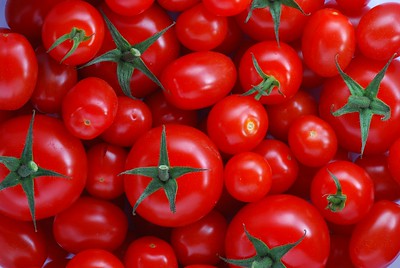
You might know your onions but how well do you know your tomatoes? Here’s a brief narrative on one of the world’s most consumed food staples:
History
The tomato plant (solanum lycopersicum) is thought to originate from the mountainous regions of Peru and Ecuador. It is thought to have been cultivated by mankind since at least 500 BC. It was introduced to Europe by the Spanish in the early 16th century. However, for centuries throughout northern Europe, the tomato was only grown as an ornamental plant in the belief that it was poisonous. The notion was based on the tomato’s botanic classification as a species of the nightshade family of plants.

Photo credit: PICRYL/PDM 1.0
Cultivation
Based on its culinary use, many of us tend to think of the tomato as a vegetable. However, botanically speaking the tomato is a fruit. Almost inconceivably, there are now more than 10,000 varieties of tomato grown worldwide. We generally think of the ripe tomato as being bright red but they come in variety of colours, including yellow, brown, orange, bronze, green, and purple. They also vary considerably in size, i.e. from the spoon tomato (6 – 8 mm dia.) to the giant beefsteak, which can weigh up to 450 g (1 lb). The rapidly growing tomato plant can be cultivated in almost any environment where the sun shines.
Versatility
The tomato is one of the world’s most versatile agricultural products. Fairly untypically, the entire fruit, including the skin and seeds, can be eaten. While tomatoes are delicious when eaten raw they are also pretty tasty when baked, boiled, broiled, grilled, fried, roasted, sautéed, stewed or steamed. They can also be dried, frozen, pickled, pureed, or made into relish, sauce, paste, or soup. Tomatoes are also used extensively in numerous other dishes and unlike many vegetables, they lose little of their goodness when cooked. Globally, they are also the most widely canned product of all horticultural yields.
Nutritional Value
Tomatoes are high in lycopene and other health-enhancing compounds. It is claimed the consumption of tomatoes can significantly help in the body’s fight against some cancers, heart disease and other chronic ailments. High in fibre and low in calories, tomatoes are an excellent source of several vitamins and antioxidants. Providing a boost to the immune system, they also help to maintain a healthy gut.
Tomatoes provide the following nutrients:
Calcium
Vitamin C
Potassium
Folate
Vitamin K
Beta-carotene
A medium-sized tomato contains:
Calories: 22
Protein: 1 g
Fat: 0
Carbohydrates: 5 g
Fibre: 1 g
Sugar: 3 g
Market Overview
The worldwide tomato market is expected to exceed 190 million tonnes with a value of around US$186 billion in 2024. The annual growth rate for the global production of tomatoes is estimated at 6.7% for the next 5 years. China cultivates some 65 million tonnes of tomatoes per year, which makes it, by far, the world’s biggest producer. However, most of the Chinese production is consumed by the domestic market. Mexico is the world’s leading exporter of fresh tomatoes, coining some 26% of the market in 2023. Globally, the USA is the biggest importer of tomato produce. In 2023, the country shipped in some US$ 3 billion worth of fresh tomatoes, collaring more than 30 % of the world market.
Header Photo Credit: Flickr/CC BY-SA 2.0





